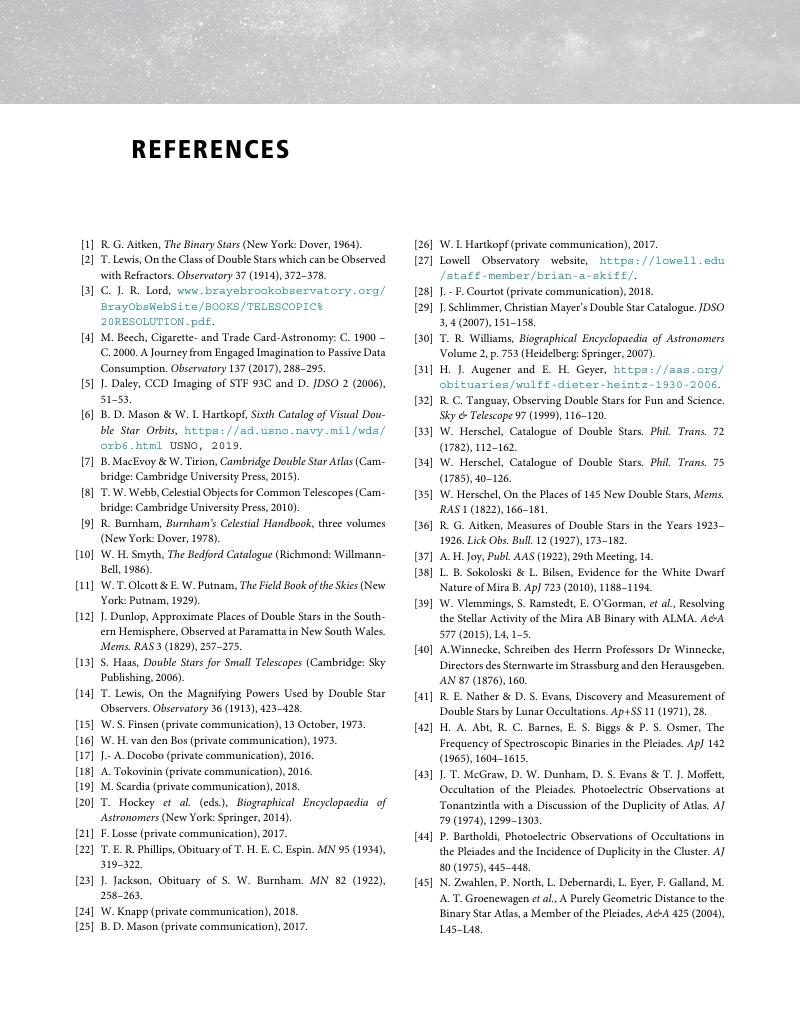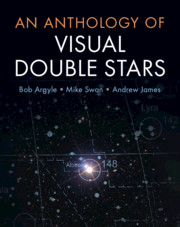Book contents
- Frontmatter
- Dedication
- Contents
- About The Authors
- Acknowledgements
- 1 Introduction
- 2 Observing Double Stars
- 3 History of Measurement Techniques
- 4 Observational Double Star Groups
- 5 Double Star Resources
- 6 Biographies of Visual Double Star Observers
- 7 Myths, Mysteries, and One-Offs
- 8 Catalogue Lists and Charts
- 9 The Catalogue
- Appendix
- References
- Index
- References
References
Published online by Cambridge University Press: 17 August 2019
- Frontmatter
- Dedication
- Contents
- About The Authors
- Acknowledgements
- 1 Introduction
- 2 Observing Double Stars
- 3 History of Measurement Techniques
- 4 Observational Double Star Groups
- 5 Double Star Resources
- 6 Biographies of Visual Double Star Observers
- 7 Myths, Mysteries, and One-Offs
- 8 Catalogue Lists and Charts
- 9 The Catalogue
- Appendix
- References
- Index
- References
Summary

- Type
- Chapter
- Information
- An Anthology of Visual Double Stars , pp. 451 - 466Publisher: Cambridge University PressPrint publication year: 2019



